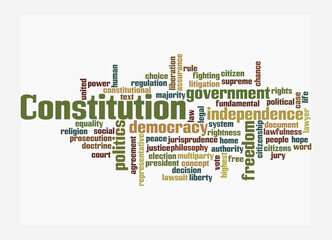Minorities’ rights in conflict prevention at the United Nations

Minorities’ rights in conflict prevention at the United Nations
Most violent conflicts have their roots in breaches of minorities’ human rights, according to a UN expert who spoke to the Human Rights Council today, advocating for the mainstreaming of minority problems in UN conflict prevention efforts.
“Globally, conflicts are becoming more intrastate, and the majority of them involve minorities with grievances of exclusion and discrimination. “Even the very few contemporary interstate wars typically have an underlying tension over minorities’ treatment, or perceived poor status and location,” observed Fernand de Varennes, the UN Special Rapporteur on minorities concerns.
“Because the majority of today’s violent conflicts involve aggrieved minority, attempts to prevent conflicts involving minorities should take center stage in international, regional, and national initiatives, addressing the core causes of exclusion and discrimination.”
World minority right
Minorities or minority groups are defined by a variety of definitions, but the differences in the definitions themselves cause confusion, negligence, and disregard. In sociology, a minority group is a group of people who are socially marginalized when compared to members of a dominating social group. Observable distinctions in ethnicity (ethnic minority), race (racial minority), religion (a religious minority), language (linguistic minority), sexual orientation (sexual minority), or disability are commonly used to categorize people. People conform to minorities within minorities as a result of this diversity.
Although the United Nations Declaration on the Rights of Persons Belonging to National or Ethnic, Religious, and Linguistic Minorities outlines the protection of minority groups, there is no legal definition of national minorities in international law.
In the Philippines, there are 75 separate minorities; in Nigeria, there are 2000 ethnic groups, but just three are majorities; and minority groups make up over 20% of India’s population. These are just a few of the many jobs available around the world. It is our responsibility as citizens to understand and support these marginalized voices, whether they be wealthy minorities, political minorities, or defined minorities. We must look beyond what we believe we know and turn to create venues where those preconceptions and ideas can be challenged.
This serves as a warning that responding to a global crisis like this is far too vital to be left to policymakers. Anyone and everyone have the ability to make a difference. Minorities must be able to participate effectively in societal activities and be no longer excluded.
That was my turning point
I recall going through the Foundation’s website and coming across a photograph that stuck with me. TB patients who had completed their treatment held up their certificates and posed with representatives of the Foundation and our school board in this shot. For some reason, I was pulled to the patients’ bright faces for a split second.
What other explanation could there be for that? Many people believe that simply looking at a person’s face may reveal their life narrative. That their past feelings and experiences leave a lasting mark, and that the shadows quivering on the planes of their cheekbones or the hollows of their eyes can sometimes be seen. These shadows may be seen on the faces of these patients. I recall going through the Foundation’s website and coming across a photograph that stuck with me. TB patients who had completed their treatment held up their certificates and posed with representatives of the Foundation and our school board in this shot. For some reason, I was pulled to the patients’ bright faces for a split second.
What other explanation could there be for that? Many people believe that simply looking at a person’s face may reveal their life narrative. That their past feelings and experiences leave a lasting mark, and that the shadows quivering on the planes of their cheekbones or the hollows of their eyes can sometimes be seen. These shadows may be seen on the faces of these patients. I recall going through the Foundation’s website and coming across a photograph that stuck with me. TB patients who had completed their treatment held up their certificates and posed with representatives of the Foundation and our school board in this shot. For some reason, I was pulled to the patients’ bright faces for a split second.
What other explanation could there be for that? Many people believe that simply looking at a person’s face may reveal their life narrative. That their past feelings and experiences leave a lasting mark, and that the shadows quivering on the planes of their cheekbones or the hollows of their eyes can sometimes be seen. These shadows may be seen on the faces of these patients.
